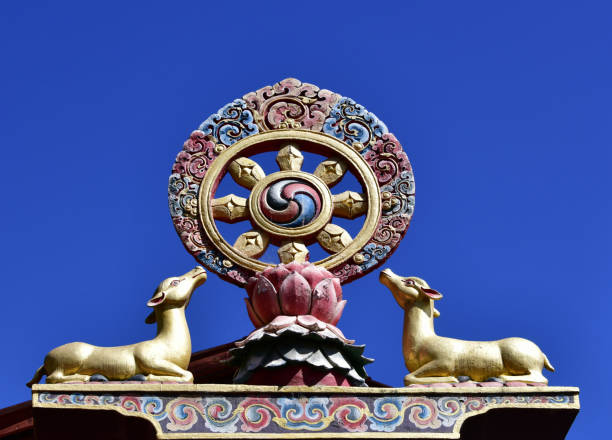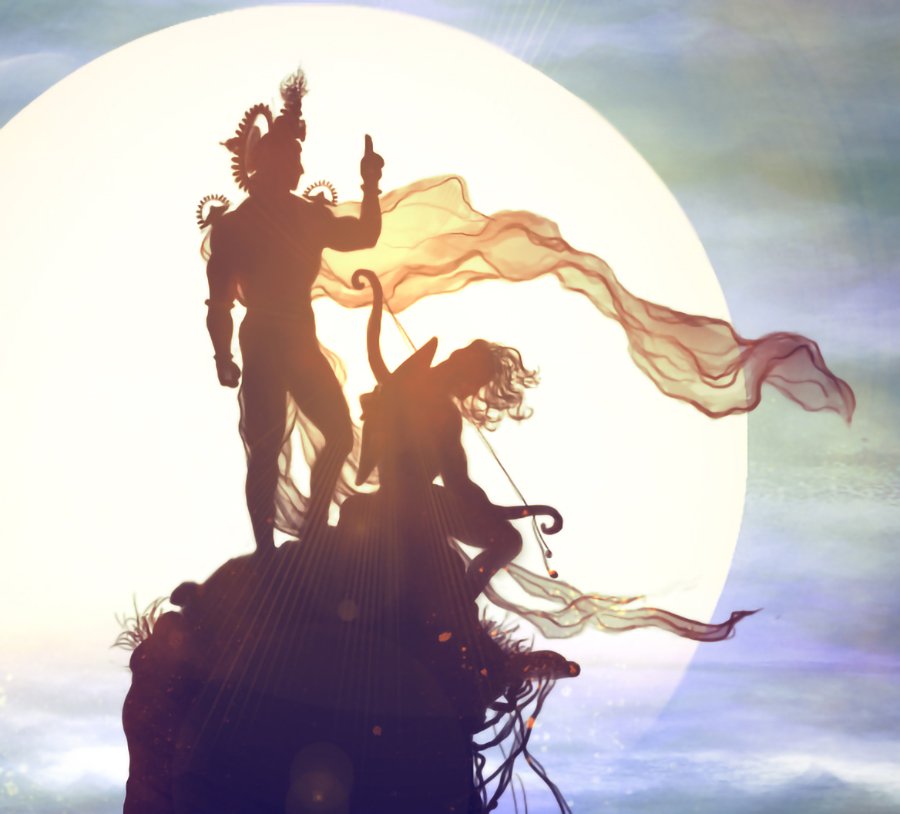The concept of Dharma embodies the notion of the “right way of living” and the “path of rightness.” Rooted in ancient Indian thought, it carries connotations of order and eternal truth. While no single-word translation exists in English, dharma encompasses behaviours that are in harmony with the order and customs that sustain life, as well as virtues and moral duties.
Dharma serves as a guiding principle on how to live a good and fulfilling life.
Origins and Evolution
To understand the depth of the dharmic principles, we explore its origins and evolution over millennia. From its ancient Sanskrit roots to its contemporary interpretations, this concept has been a guiding light for individuals and societies seeking harmony and righteousness.
Ancient Sanskrit Roots
The term “Dharma” finds its origins in Sanskrit, where it conveys meanings of duty, righteousness, and cosmic order. It isn’t merely a word; it’s a profound concept that illuminates the path of right living for seekers of truth and wisdom.
Early Vedic Literature and its Depiction
In the early Vedic literature, it is a fundamental concept, intricately woven into the fabric of life and the universe. It encompasses duties, rights, laws, conduct, and virtues that uphold the cosmic order known as Ṛta.
Dharma isn’t static; it’s a dynamic force that shapes the behaviour and moral outlook of individuals and society.
Evolution in Hinduism
Within the vast landscape of Hinduism, dharma continued to evolve, adapting to the changing tides of time and society. It became one of the four Puruṣārthas, representing the pursuit of righteousness and moral duty. Its timeless validity underscores its enduring relevance in guiding individuals towards a life of virtue and fulfilment.

Meanings and Interpretations
Primary Definitions
In its essence, it offers guidance for living a life of integrity and purpose. Its primary definitions revolve around concepts of duty, righteousness, and cosmic order. It’s not about claiming to have all the answers but rather about humbly seeking to align our actions with what is right and just.
Variations in Interpretation
Across different religious and philosophical traditions, interpretations vary like the colours of a sunset.
While some may emphasize obedience to religious laws, others focus on inner moral development or social responsibility.
We acknowledge that each tradition offers valuable insights into the multifaceted nature of this concept, reminding us of the humility needed in our quest for understanding.
The Wheel
The Dharma Wheel, also known as the Dharmachakra, is a symbol deeply intertwined with Buddhist teachings and practice. Depicted as a wheel with spokes radiating from a central hub, it represents the endless cycle of birth, death, and rebirth, known as Samsara, as well as the path to liberation from suffering, known as nirvana.
Each spoke of the wheel symbolizes one of the eightfold path, which consists of right view, right intention, right speech, right action, right livelihood, right effort, right mindfulness, and right concentration. The Wheel serves as a visual reminder of the core teachings of Buddhism and the importance of following the path towards enlightenment.
Buddhists believe that the first turning of the wheel occurred when the Buddha taught the five ascetics at the Deer Park in Sarnath, because of this, dharmachakras are often represented with a deer on each side.
Through the continuous turning of the wheel, practitioners are encouraged to cultivate wisdom, ethical conduct, and mental discipline in their pursuit of spiritual awakening.

Contemporary Relevance
In today’s fast-paced world, the relevance of the dharmic concept shines through in its ability to offer timeless wisdom for navigating life’s complexities. It’s not about claiming superiority over other belief systems but rather about recognizing the universal truths that underpin human existence.
This guiding principle invites us to approach life with humility and curiosity, acknowledging that we are all students on the path of learning and growth.

Dharma in Practice
Application in Everyday Life
It isn’t just for the sages and saints; it’s for ordinary folks like you and me trying to make sense of this complex world. In our daily lives, it nudges us to choose kindness over cruelty, honesty over deception.
It’s about the small acts of compassion and integrity that ripple outwards, making the world a slightly better place, one step at a time.
Examples of its Influence
Look around, it is shaping our behavior and societal norms. From the respect we show our elders to the emphasis on social justice and equality, Dharma infuses our collective consciousness with values that transcend cultural boundaries. It’s not about grand gestures or lofty ideals; it’s about the quiet strength of ordinary people striving to do the right thing, day in and day out.
Importance of Fostering Harmony
In a world marked by division and discord, it is reminding us of our interconnectedness and shared humanity. By embodying these principles, we can foster harmony and balance in our relationships, communities, and beyond. It’s not about claiming to have all the answers but rather about humbly acknowledging our role in creating a more just and compassionate world.
FAQ
What is the English word for dharma?
While there isn’t a direct translation into English, it is commonly understood to encompass behaviours that are in harmony with the order and customs that sustain life, as well as virtues and moral duties.
What is the meaning of dharma?
Dharma embodies the concept of living a righteous and virtuous life, aligning one’s actions with cosmic order and moral duty.
In Buddhism, it represents the universal truth common to all individuals at all times, as proclaimed by the Buddha. It encompasses the teachings of the Buddha, known as the dharma, which practitioners uphold as the ultimate refuge.
What is the difference between karma and dharma?
While both karma and dharma are central concepts in Indian philosophy, they serve different purposes. Karma refers to the law of cause and effect, where actions have consequences. Dharma, on the other hand, encompasses moral duty, righteousness, and the right way of living.
What is the basis of dharma?
The basis lies in the pursuit of righteousness and moral duty, as outlined in religious texts such as the Vedas and the Bhagavad-Gita. It is rooted in the belief in the cosmic order and the inherent virtues that guide individuals towards a life of virtue and fulfilment.
What are the five pillars of dharma? What is its base?
According to Vedic and Bhagavad-Gita teachings, the five pillars of Universal (Ishwari) Dharma are Kshara, Akshara, Purushottama, Para-Shakti, and Parabrahman. These pillars rest upon the foundation of the Whole Unified Universe, which is self-existing, self-illuminating, and self-pulsating.




